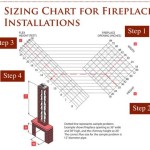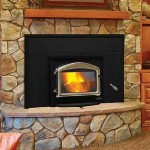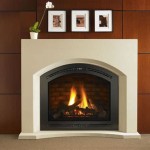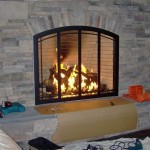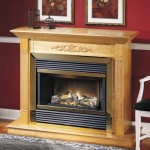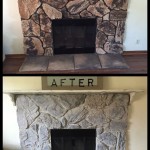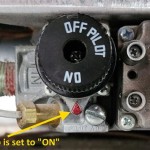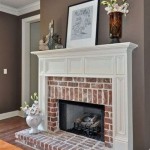Troubleshooting a Gas Fireplace That Won't Start
A gas fireplace offers a convenient and efficient way to add warmth and ambiance to a home. However, encountering a situation where the fireplace refuses to ignite can be frustrating. This article provides a comprehensive guide to troubleshooting common issues that prevent a gas fireplace from starting, outlining potential problems and offering practical solutions. Properly diagnosing and addressing the root cause is crucial for restoring the fireplace to its optimal functionality.
Before attempting any troubleshooting steps, it is imperative to ensure that the gas supply is active and properly connected. Verify that the gas meter is on and that no disruptions in gas service have been reported in the area. Additionally, confirm that the shut-off valve located near the fireplace is in the open position, allowing gas to flow freely to the appliance. Safety precautions should always be prioritized. If any doubts exist regarding the gas supply or handling gas connections, contacting a qualified gas technician is strongly advised.
Verifying the Pilot Light Assembly
The pilot light is a small, continuous flame that ignites the main burner in a gas fireplace. A malfunctioning or extinguished pilot light is a frequent culprit when a gas fireplace fails to start. Several factors can contribute to pilot light issues, including a blocked pilot light orifice, a faulty thermocouple or thermopile, or insufficient gas pressure reaching the pilot assembly.
To inspect the pilot light assembly, locate the pilot light access panel, usually situated at the base of the fireplace. Exercise caution when removing the panel, as components may be hot. Once the panel is removed, visually examine the pilot light. If the pilot light is not lit, attempt to relight it following the manufacturer's instructions. These instructions are typically found on a label near the pilot assembly or in the fireplace's owner's manual.
When relighting the pilot light, hold down the pilot button or gas control knob for the recommended duration, as specified in the instructions. This allows gas to flow to the pilot light. If the pilot light ignites but extinguishes when the button is released, the thermocouple or thermopile may be malfunctioning. A thermocouple is a safety device that generates a small electrical current when heated by the pilot light. This current signals the gas valve to remain open, allowing gas to continue flowing. A thermopile performs a similar function, generating a larger voltage to operate the main burner directly or to power an electronic ignition system. If the thermocouple or thermopile is faulty, it will not generate sufficient voltage, causing the gas valve to close and extinguishing the pilot light.
To test the thermocouple or thermopile, a multimeter is required. Disconnect the thermocouple or thermopile from the gas valve and use the multimeter to measure the voltage output while the pilot light is lit. Compare the measured voltage to the manufacturer's specifications. If the voltage is below the specified range, the thermocouple or thermopile needs replacement. It is crucial to replace the thermocouple or thermopile with a compatible part specified by the fireplace manufacturer.
Another potential cause for pilot light problems is a blocked pilot light orifice. The orifice is a small opening that regulates the flow of gas to the pilot light. Over time, dust, debris, or corrosion can accumulate in the orifice, restricting the gas flow and causing the pilot light to weaken or extinguish. To clean the pilot light orifice, turn off the gas supply to the fireplace and carefully remove the pilot light assembly. Use a small wire or a specialized pilot light cleaning tool to clear any blockage in the orifice. Avoid using excessive force, as this can damage the orifice. After cleaning, reassemble the pilot light and attempt to relight it.
Examining the Ignition System
If the pilot light is functioning correctly but the main burner still fails to ignite, the ignition system may be the source of the problem. Gas fireplaces utilize various ignition systems, including standing pilots, electronic ignition systems (such as intermittent pilot ignition (IPI) or direct spark ignition (DSI)), and millivolt systems. Each system operates differently, and troubleshooting procedures vary accordingly.
For fireplaces with electronic ignition systems, the ignition module or spark igniter is responsible for generating the spark that ignites the gas. A faulty ignition module, a cracked or damaged igniter electrode, or a loose or corroded connection can prevent the system from generating a spark. Inspect the ignition module and igniter electrode for any signs of damage. Ensure that all connections are secure and free of corrosion. If the igniter electrode is cracked or damaged, it should be replaced. A visual inspection during the ignition sequence can help identify a weak or intermittent spark. The sound of the clicking spark igniter should be consistently audible during the ignition attempt. If no spark is apparent, consider replacing the ignition module.
In millivolt systems, the thermopile generates a millivolt current to operate the gas valve. A faulty thermopile, damaged wiring, or a corroded gas valve can disrupt the circuit and prevent the main burner from igniting. Use a multimeter to measure the millivolt output of the thermopile. Compare the measured voltage to the manufacturer's specifications. Inspect the wiring connections between the thermopile, gas valve, and any other control components. Clean or replace any corroded connections. If the millivolt output is below the specified range or the wiring is damaged, replacing the thermopile or repairing the wiring is necessary.
In some cases, the gas valve itself may be malfunctioning. The gas valve is responsible for regulating the flow of gas to the main burner. A faulty gas valve may fail to open when the thermostat or switch calls for heat, preventing the burner from igniting. Testing a gas valve typically requires specialized knowledge and equipment. It is recommended to consult a qualified gas technician to diagnose and replace a malfunctioning gas valve.
Addressing Common Obstructions and Blockages
Obstructions and blockages within the gas fireplace system can impede proper gas flow and combustion, leading to ignition problems. These obstructions can occur in various locations, including the burner ports, gas lines, and air intake vents. Regular maintenance and cleaning can help prevent these issues.
The burner ports are small openings on the main burner that allow gas to escape and mix with air for combustion. Over time, these ports can become clogged with dust, debris, or spider webs. A clogged burner port can restrict gas flow and cause uneven or incomplete combustion. To clean the burner ports, turn off the gas supply and carefully remove the burner assembly. Use a small wire brush or a vacuum with a narrow nozzle attachment to remove any debris from the burner ports. Avoid using sharp objects that could damage the ports. After cleaning, reassemble the burner and test the fireplace.
Gas lines can also become obstructed, especially if the fireplace has not been used for an extended period. Corrosion, rust, or debris can accumulate in the lines, restricting gas flow. A visual inspection of the gas lines can help identify any signs of corrosion or damage. If the lines are accessible, disconnecting them and blowing compressed air through them can help dislodge any debris. However, this should be done with caution and only if the gas supply is completely shut off. Severe corrosion or damage may necessitate replacing the gas lines.
Air intake vents are designed to allow fresh air to circulate into the fireplace for proper combustion. Blocked air intake vents can restrict airflow, causing incomplete combustion and ignition problems. Regularly inspect and clean the air intake vents to ensure that they are free of obstructions. Remove any dust, debris, or obstructions that may be blocking the vents. Ensure that surrounding objects, such as furniture or decorations, are not obstructing the airflow to the vents.
Proper ventilation is crucial for the safe and efficient operation of a gas fireplace. A blocked or restricted flue or chimney can cause combustion byproducts to accumulate in the home, posing a significant safety hazard. Regularly inspect the flue or chimney for any signs of blockage, such as bird nests, debris, or collapsed sections. Schedule a professional chimney sweep to clean and inspect the flue or chimney at least once a year. Ensure that the damper is fully open before operating the fireplace. Never operate a gas fireplace with a blocked or partially blocked flue or chimney.
In summary, troubleshooting a gas fireplace that won't start involves a systematic approach, starting with verifying the gas supply, inspecting the pilot light assembly, examining the ignition system, and addressing any common obstructions or blockages. Prioritizing safety throughout the troubleshooting process is paramount. When dealing with gas appliances, enlisting a qualified gas technician is recommended if uncertainty or complexity arises during the troubleshooting process.

Gas Fireplace Won T Stay Lit Magic Touch Mechanical

Fireplace Won T Stay Lit This Is How You Fix It

Reasons Your Gas Fireplace Isn T Working Experts

Gas Fireplace Won T Stay Lit Magic Touch Mechanical

Why Your Gas Fireplace Won T Light And How To Fix It

My Gas Fireplace Won T Light Resetting The Control Module

Gas Fireplace Main Burner Won T Light

The Main Burner Flame Will Not Come On Or Stay Www Mygasfireplacerepair Com

Trouble Shooting Tips So You Won T Be Stumped By Gas Fireplace Issues

Gas Fireplace Troubleshooting Tips And Tricks Vertical Chimney Care
Related Posts

